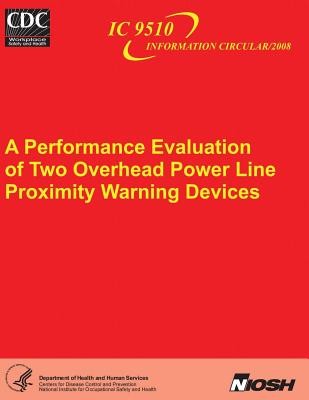| A Performance Evaluation of Two Overhead Power Line Proximity Warning Devices Contributor(s): And Prevention, Centers for Disease Cont (Author), Safety and Health, National Institute Fo (Author), Human Services, D. (Author) |
|
 |
ISBN: 1493573411 ISBN-13: 9781493573417 Publisher: Createspace Independent Publishing Platform OUR PRICE: $13.29 Product Type: Paperback Published: October 2013 |
| Additional Information |
| BISAC Categories: - Technology & Engineering | Industrial Health & Safety |
| Physical Information: 0.09" H x 8.5" W x 11.02" (0.28 lbs) 44 pages |
| Descriptions, Reviews, Etc. |
| Publisher Description: Many of the electrical fatalities in construction, mining, and other industries are due to personnel accidentally contacting overhead electrical power lines with high-reaching equipment such as mobile cranes. During a recent 10-year period, approximately 20% of occupational electrocutions involved contact between mobile equipment and overhead power lines. In a typical power line contact accident, the frame of the equipment (and possibly a suspended load in the case of mobile cranes) is energized to a high voltage relative to the surrounding ground surface. Anyone touching the frame and ground simultaneously is exposed to this high voltage and can become a path for lethal levels of electrical current. Overhead electrical power line PWDs are mobile equipment-mounted safety devices intended to alert personnel if the equipment is operating too close to an energized overhead electrical power line. Such devices have been commercially available for more than 30 years, but have not found widespread acceptance in many industries due, in part, to a lack of regulatory requirements for their use. The Occupational Safety and Health Administration (OSHA) is currently involved in updating the standards for cranes and derricks (29 CFR 1926.550). Part of the proposed revision addresses overhead power line safety for mobile cranes and includes explicit reference to PWDs as one of several acceptable measures for protecting workers from accidental power line contacts. With this proposal to accept PWDs as one means to maintain a safe distance between cranes and power lines (as specified in 29 CFR), NIOSH researchers concluded that an objective performance evaluation of PWDs would be valuable and timely. A performance evaluation of two commercially available overhead power line PWDs was conducted at NIOSH-PRL. The objective of the tests was to document performance capabilities and limitations for these PWDs by identifying factors that can influence their operation. The overall approach for this testing called for the two PWD companies to install their devices on a government-owned 22-st (20-mt) rough terrain crane and specify procedures for their use. The crane was to be operated using a wide range of boom positions near several different configurations of energized overhead power lines, with the performance of the PWDs documented. This full-scale testing took place at a purpose-built overhead power line test site at PRL. PRL engineers coordinated and directed this research, but input for developing the test protocol was solicited from a number of cooperators, including the two PWD manufacturers participating in the study, an equipment manufacturing trade association representative, labor union representatives, OSHA, a large private construction and crane rental firm with experience using PWDs, and an electrical engineering consulting firm working as a NIOSH contractor. |